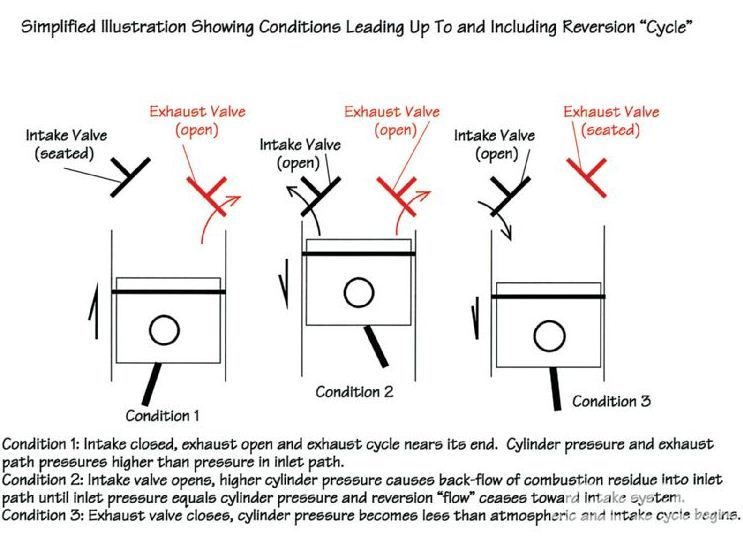Brief overview of how exhaust works & improving Exhaust Gas Velocity
#1
Join Date: Nov 2010
Location: Red Banks, Mississippi
Posts: 17,456
Received 3,931 Likes
on
2,288 Posts
An overview on how exhaust systems work & how to improve them.
Technically exhaust systems cannot increase or decrease an engines power. However, and this is a BIG however, exhausts systems can have a profound affect on increasing or decreasing engine pumping loss.
You can loosely compare engine pumping loss with adding an extra 200 lbs weight to the bike. The engine still has the same amount of power, but with the extra weight on the bike it will accelerate slower...it will feel like it has less power than it would if the extra 200 lbs was removed.
Every engine will suffer to some degree from engine pumping loss. The goal of many exhaust systems (including the Thunder Torque Inserts) is reduced engine pumping losses, resulting in more felt power at the rear wheel. If efficiency of the engine increases then fuel mileage may also increase because less throttle is needed to move the bike forward at the same speed.
There are Many design factors that can affect whether an exhaust system increases or decreases engine pumping losses, far more than could be put in this post.
Generally most of us that ride Harley's want the most felt (rear wheel) torque in the low to mid rpm range as possible. Inertial scavenging has a major effect on that felt power.
The nuts & bolts of increasing inertial scavenging is the following-
When the exhaust valve opens two thing happen. A pulse (wave) of energy enters the exhaust pipe, generally at 1300-1700 feet per second. This can be understood as a shock wave from an explosion.
At the same time the spent combustion gases enter the exhaust pipe at 150-300 feet per second. (Generally the faster the exhaust gases travel, the better the inertial scavenging and the less engine pumping loss)
The energy wave that is heading toward the end of the pipe will get to a low pressure area faster (low pressure being a bigger area of the pipe OR the end of the pipe) WHEN that happens some of the wave will reverse direction and collide with the slower moving exhaust gases that are still traveling toward the end of the pipe. This will slow down the speed of the exhaust gases. This will produce the result of less felt torque at the rear wheel.
Exhaust systems that are are successful in increasing exhaust gas velocity (resulting in an increase in inertial scavenging and a decrease in engine pumping loss) will make the bike have more felt torque across the RPM band, especially in the low & mid range.
The Thunder Torque Inserts have a proprietary shape that is much better at increasing exhaust gas velocity, thereby reducing reversion, which reduces engine pumping losses, and increasing inertial scavenging. Net result is a significant increase in power & torque in the low and mid range Without sacrificing any top end.
The type of material, shape, size, thickness, & surface coatings all make a difference in how well the Thunder Torque works at increasing exhaust gas velocity.
The TTI's obviously have their genesis in the simple lollipop concept. But they are quite a bit more, especially the W series.
The main goal that is achieved by the unique design and combination of materials in TTI's is to increase felt power in most any exhaust system for a low price.
#2
Thread
Thread Starter
Forum
Replies
Last Post
freakchile13
Softail Models
2
04-29-2013 11:24 AM
dohadex
Touring Models
1
09-05-2012 11:04 AM





